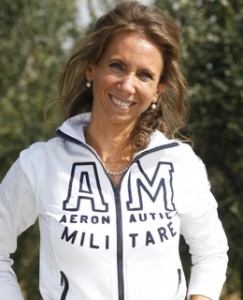Ten minutes with … Barbara Tamburini

Barbara Tamburini
Barbara Tamburini is a modest and unassuming, and extremely talented, consultant winemaker in Italy, who has been making wine since 1996.
She makes wine for around 20 properties, ranging in size from 5 hectares to 60 hectares, mainly across Tuscany and Umbria, and she cites her car as her first home during the busy season, as she travels almost non-stop between clients.
Hers was an accidental journey into wine. Knowing that she needed a career that allowed her to work outdoors and with people, her only option at the time was agriculture, so she started her university training, in oenology, without having previously tasted wine. But, she said, without any prior prejudice, “I learned many things in the right way” from an open-minded perspective without any pre-conceptions. And having taken the tough choice of an experimental thesis over four harvests, she left the University of Pisa with the top marks.
She still consults for one of the wineries – Gualdo del Re – where she did her university research.
A year after graduating she met up with Vittorio Fiore, whom she describes as “one of the best winemakers in the world”, and whose seminars she had attended at university. She said “ten years ago he was looking to slow down, so now we work together at some wineries.” And they both still have their own clients.
Quite often she works with single varieties, which she says “is the most difficult. You must have the best from single grapes.” But some grapes are made for each others, and “when we do the blend of merlot and cabernet sauvignon, it gives a well balanced equilibrium.”
But sangiovese, central Italy’s ‘prince’, is more capricious. She said “it is not simple to make a great sangiovese, but thanks to the new clones we can make very high quality pure sangiovese. But it is a grape variety we can blend well with international grape varieties too.”
Is there a point where too much cabernet sauvignon dominates the idiosyncracies of sangiovese? Well, Tamburini said “if we have a powerful sangiovese, we can need 10 to 20% to make a high quality wine, which still has the personality of a Tuscan wine. And I like to make good wine that respects the territory.” And, she added, “wine that is also elegant.”
Achieving elegance can be another tricky issue. Tamburini, who has her own elegant style, said “the vinification must respect the aromas of the grapes. We work with French oak, usually a blend of different forests and tonnelleries to give a unique value to the wine, but [drinkers] must be able to recognise the grapes.” She said new oak is fine only when the grapes have great maturity.
Being sensitive to “the different characters of different grape varieties, all with their own different needs” is high on Tamburini’s list of skills, as is, she said, having “the perfect conditions of the vineyards, rootstocks and clones, having the right choices in the vineyard.”
Barbara Tamburini’s list of clients, 2011
Gualdo del Re, Suvereto (LI)
Fattoria di Grignano, Pontassieve (FI)
Podere Le Poggiarelle, Carmignano (PO)
Az. Agr. Colline San Biagio, Carmignano (PO)
Giuliano Tiberi, Cantagrillo (PT)
Tringali Casanova, Bolgheri (LI)
I Balzini, Barberino Val d’Elsa (FI)
Castel Pietraio, Monteriggioni (SI)
Castello di Ripa d’Orcia, San Quirico d’Orcia (SI)
La Calonica, Valiano di Montepulciano (SI) and Cortona (AR)
Az. Agr. Cecilia, Isola d’Elba (LI)
Podere Scurtarola, Massa
Podere Brizio, Montalcino (SI)
Tenuta Roccaccia, Pitigliano (GR)
Podere La Corsa, Capalbio (GR)
Goretti, Perugia
Fattoria Le Mura Saracene, Montefalco (PG)
Azienda Cavitria, Tirano (SO)



